What's New
Displaying results 3531 - 3540 of 4052
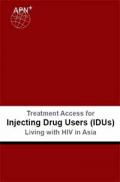
Resource | Publications,
Factors such as stigma and discrimination, poverty, criminalization of drug use, sex work and homosexuality, limited antiretroviral therapy (ART) service facilities and lack of trained healthcare professionals on HIV treatment have all been cited as barriers to HIV treatment access for people living with HIV (PLHIV). Although studies have also provided the frameworks for understanding and addressing how gender and sexuality, employment and drug use-based social status have impeded our goal of delivering treatment, care and support to marginalized communities; progress in achieving equitable access on essential HIV healthcare services remains disappointingly slow.
In 2008, the Asia Pacific Network of People Living with HIV/AIDS (APN+) conducted a network-based research project aiming to explore the experience of women, men who have sex with men/transgender people (MSM/TG) and injecting drug users (IDUs) living with HIV in accessing ART and other HIV-related healthcare services.
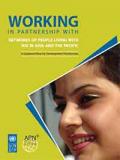
Resource | Tools,
This Guidance Note provides important practical tips for working with groups of people living with HIV in the Asia-Pacific region. Its purpose is to facilitate equal, effective and synergistic partnerships between development organisations/practitioners and PLHIV networks. Ethically, it is grounded in the same human-rights principles as those of GIPA (Greater Involvement of People Living with HIV/AIDS): empowerment, non-discrimination, ownership and active, meaningful participation. Functionally, its aim is to improve future interventions by groups working with PLHIV networks in other contexts. It is a practical guide, based on a wealth of experience and learning drawn from PLHIV networks and their supporting partners in several countries across the Asia-Pacific region.
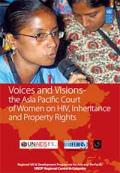
Resource | Publications,
A key challenge faced by women infected and affected by HIV in the Asia Pacific region is the denial of their right to inheritance and properties. Reports from networks of women living with HIV, as well as academic research in the region, show that it is a crucial factor in reducing women's vulnerability to violence and HIV, as well as empowering women to cope with the social and economic impact of the epidemic at the household level.
This booklet and the film enclosed comprise the highlights of the Court and reflections by people concerned with the issues. While the film takes one directly to the Court proceedings, the intention of the booklet is to help set the context and serve as a companion.

Resource | Tools,
HIV is the greatest threat to development facing the world today. Most children living with HIV were infected by their mothers who are living with HIV. These children get infected during pregnancy, childbirth or during breastfeeding. For the mother to infect the child, she might have been infected before she got pregnant, when she was pregnant or even when she was breastfeeding. We know that we can prevent HIV in children by preventing the mother from initial infection, by preventing unintended pregnancies in women with HIV and, by ensuring that pregnant women with HIV have the care that prevents mother-to-child transmission. We can now considerably reduce the chances of a baby being infected by his/her mother. Globally, this intervention has come to be known as PMTCT—prevention of mother-to-child transmission. Without PMTCT about 35% of babies born to women with HIV will be infected. With PMTCT this is reduced to about 5%.
The Fiji, Vanuatu, Kiribati and Solomon Islands PMTCT Training Package is based largely on the 2007 update of the PMTCT Generic Training Package (GTP) that was developed under the direction of the World Health Organization and the U.S. Centers for Disease Control and Prevention for adaptation by countries and regions across the globe. This PMTCT Training Package is expected to play a key role in accelerating the scale up of PMTCT services in the Pacific region through training of healthcare workers to implement appropriate, quality services for PMTCT.
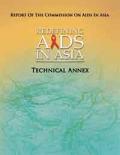
Resource | Publications,
The Commission on AIAIDS in Asia publicly released its report Redefining AIDS in Asia: Crafting an Effective Response, in March 2008, by handing it over to the UN Secretary General Mr Ban Ki-moon in New York. Since its publication, the report has attracted the attention of both policy makers and academics working in the field of HIV.
Many have requested access to the background papers that formed the basis of the Commission’s report. This Technical Annex is an attempt to put the evidence collected by the Commission in the course of its work into the public domain.
The studies included in this Annex, as one can see, cover a wide range of themes like epidemiology, unit costing, assessing the total resource need, cost-effectiveness and socio-economic impact in general and in particular on women, children and young people. Research material bearing on legislation, impact mitigation and effectiveness of HIV programmes has also been presented.
Many areas addressed in this Technical Annex are either new or not previously discussed adequately. Some of these include providing a clear quantitative basis for prioritization of most-at-risk populations; estimating the unit cost of interventions; measuring the impact in financial terms at the household level; and quantifying addition to poverty due to HIV.
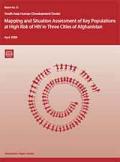
Resource | Publications,
As yet, little is known about the HIV epidemic status and potential in Afghanistan. The country seems to be at an early epidemic phase with low HIV prevalence, but there are a number of underlying vulnerability factors that could lead to the conditions for epidemic expansion, including drug trafficking, the post-conflict situation with displacement of populations, a fledgling health care system, and a low level of knowledge and awareness about HIV/AIDS. As in other parts of central and south Asia, the most important proximate determinants of the scale and distribution of an HIV epidemic in Afghanistan will be the size and characteristics of high risk networks involving injecting drug users (IDUs), female sex workers (FSWs) and men who have sex with men (MSM) who are at high risk (i.e., have high numbers of sexual partners).
Assessments from elsewhere in central Asia indicate an explosive growth in injecting drug use and commercial sex work throughout the region, concurrent epidemics of sexually transmitted infections (STIs), and economic and political migration. As yet, little information is known about the size, distribution, and characteristics of IDU and sex worker sub-populations in Afghanistan. Therefore, the World Bank (WB) agreed with the Ministry of Public Health (MOPH) to contract with the University of Manitoba (UM) to conduct an assessment of these three key, high risk populations in three cities of Afghanistan: Mazār-i-Sharif, Jalalabad, and Kabul.
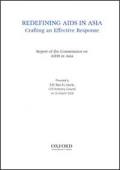
Resource | Publications,
A few years after the first reported case of AIDS in the USA, the Human Immunodeficiency Virus (HIV) had also established itself in Asia. It spread quickly and by the early 1990s, HIV infections were being reported in every country of Asia. In some, notably Thailand, major epidemics were underway. A little more than two decades later, an estimated 9 million people in Asia have been infected with HIV, and millions of them have died of AIDS-related illnesses.
The Commission on AIDS in Asia was set up in June 2006 and assigned an 18-month mandate to study and assess the impact of AIDS in Asia, and to recommend strategies for a stronger response to HIV and AIDS. The Commission's terms of reference and its composition are provided in the annexes to this Report.
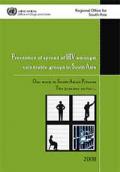
Prevention of Spread of HIV amongst Vulnerable Groups in South Asia: Our work in South Asian Prisons
Resource | Publications,
Worldwide at any given time, there are approximately 10 million prison inmates, with an annual turnover of 30 million. Thus, after release, millions of prisoners return to social networks in the general community, thereby facilitating the spread of HIV to the community.
Prison inmates are vulnerable to risk behaviours including drug abuse and HIV. Although no reliable estimates are available for the South Asian region, in most countries, drug use and unsafe sexual practices are well-recognized problems in prison settings.
Everywhere in the world, rates of HIV-infection among prison populations are generally much higher than in the general population. Drug use in general, and injecting drug use in particular, as well as violence and the practice of men having sex with men are widespread in prisons.
In South Asia (Bangladesh, India, Maldives, Nepal and Sri Lanka), 26 prison intervention sites
are being supported by UNODC under its regional project RAS/H71 titled, "Prevention of spread of HIV amongst vulnerable groups in South Asia".
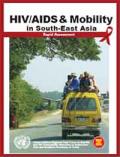
Resource | Publications,
In South-East Asia, mobility is a growing phenomenon and a major concern due to the high vulnerability to HIV of mobile populations. The dynamics of population movement have evolved in South-East Asia over the last decade, and are in a phase of acceleration due to multiple factors including geopolitical and socio-economic changes, infrastructure development and closer cooperation among ASEAN Member Countries. Whether mobility is internal or cross-border, whether it is voluntary or forced, this increasing population movement generates particular conditions and circumstances that render migrants vulnerable and at risk of HIV infection.
This document presents the key findings and recommendations of a rapid assessment conducted on HIV and mobility issues in the 10 ASEAN Member Countries in 2007-2008. It includes the migration patterns and HIV situation across the region, and the challenges and opportunities facing South-East Asian countries as they work together to develop a comprehensive response to HIV for migrant and mobile populations.






